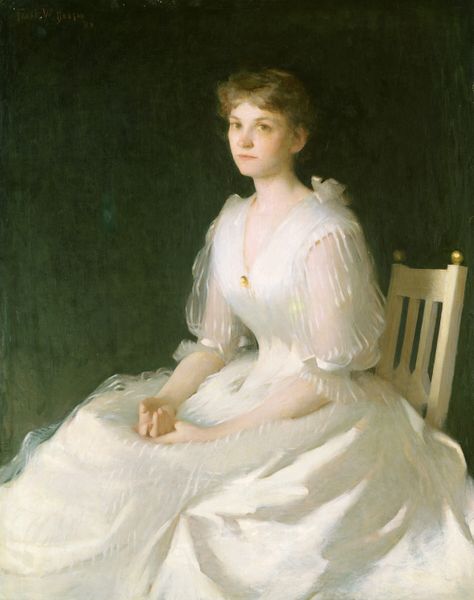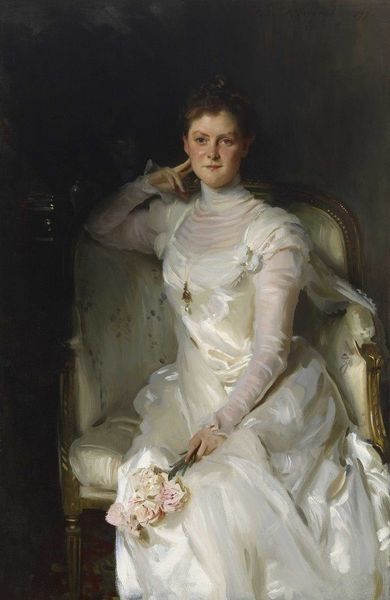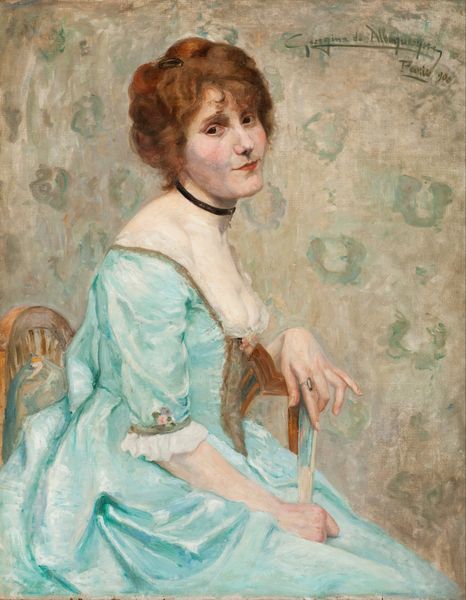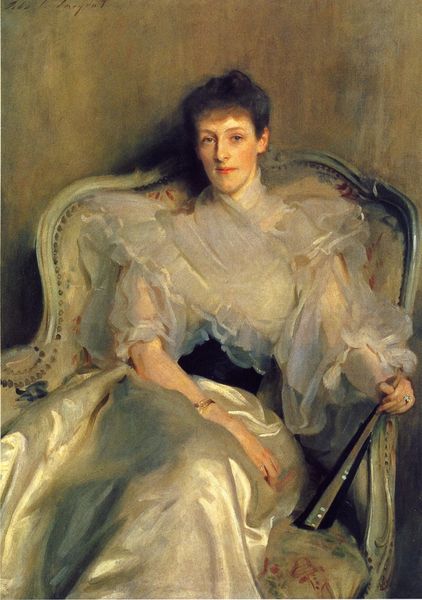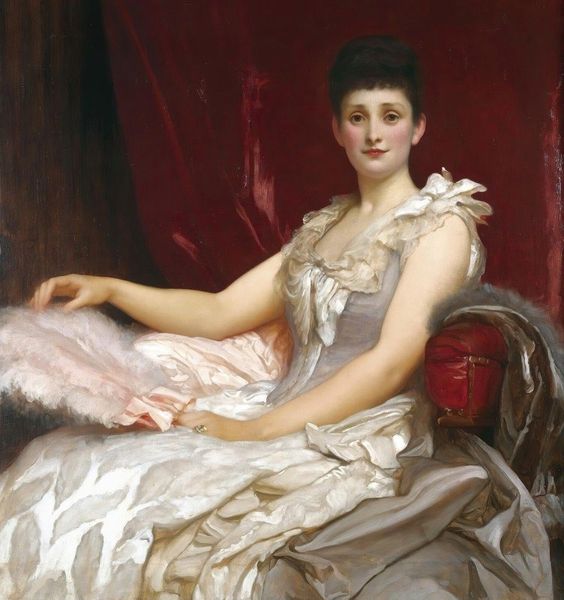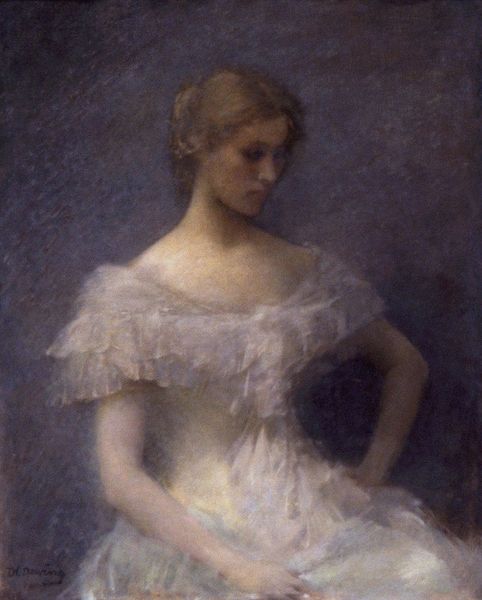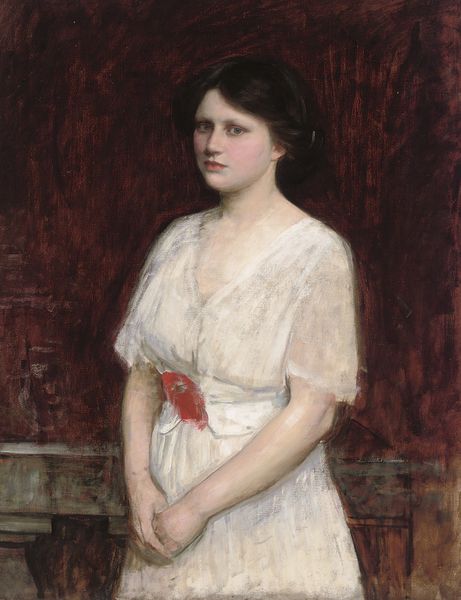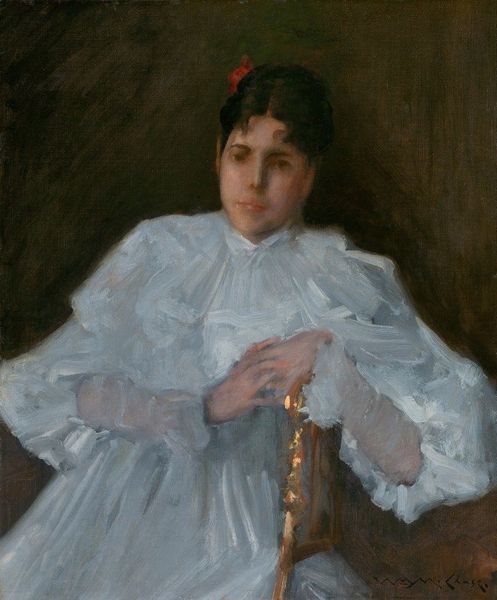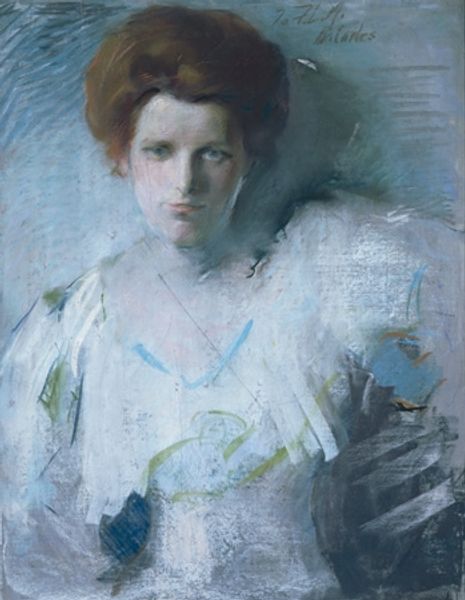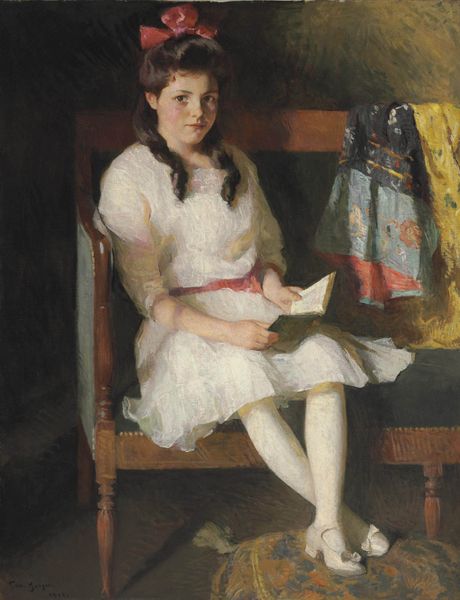
#
glasgow-school
Copyright: Public Domain: Artvee
Editor: Here we have Sir John Lavery’s “Portrait of a Young Lady,” painted in 1886 using oil paint. The subtle blending and muted color palette create a tranquil atmosphere, almost dreamlike. What strikes you most about the composition? Curator: Formally, I'm immediately drawn to the way Lavery manipulates light. Observe the subtle gradations across the subject’s face and gown. How do these choices emphasize form, while simultaneously flattening the pictorial space? It pushes against traditional representation. Editor: I see what you mean. The light seems less about creating volume and more about emphasizing the surface quality of the paint. It almost feels like Lavery is more interested in the paint itself than creating a perfect likeness. Curator: Precisely. The subject’s features are softly rendered, dissolving into the atmospheric haze. Note the restricted color range: the off-whites, creams, and muted grays. How does this limited palette contribute to the painting's overall effect? Does it unify the piece, or perhaps create a sense of quiet unease? Editor: I think it does both. It harmonizes the various elements, but that almost-monochromatic effect, gives her pale features an eerie quality. It emphasizes the brushstrokes, drawing attention to Lavery's technique and the material quality of the paint itself, wouldn't you agree? Curator: An astute observation. Lavery prioritized surface and painterly gesture over precise representation. It moves us toward the core essence of the formal qualities inherent in painting. Editor: I had not previously observed such emphasis on pure formalism. Thank you. Curator: My pleasure, and an enlightening experience for us both, no?
Comments
No comments
Be the first to comment and join the conversation on the ultimate creative platform.
